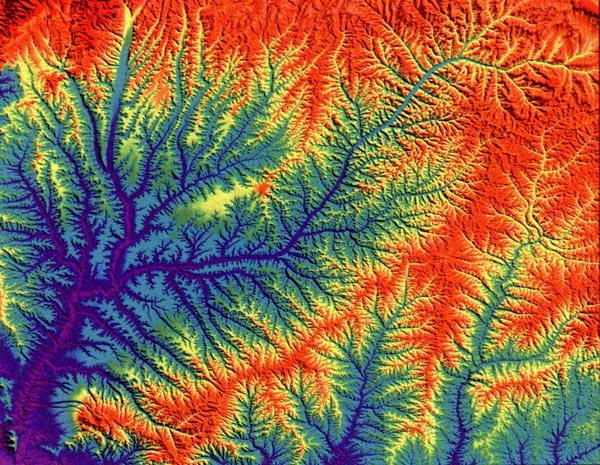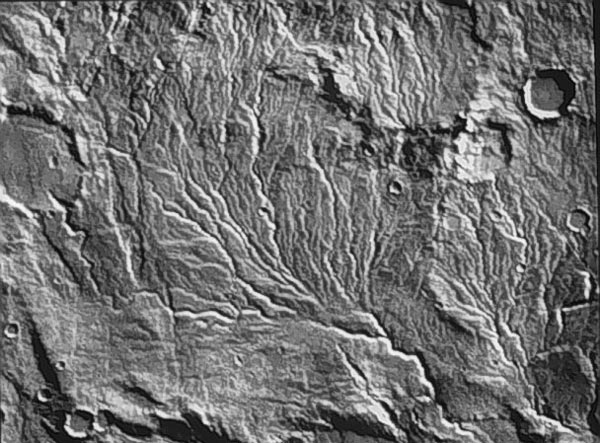Fractal Rivers
"All the branches of a watercourse at every stage of its course, if they are of equal rapidity, are equal to the body of the main stream.
Once again, Leonardo anticipated the discovery of fractal geometry by his insightful analysis of natural systems. Much like the circulatory system in the body, the planet Earth has fractal river networks that transport rainfall from the land to the oceans. Like all fractals, these complex, self-similar patterns are formed by the repetition of a simple process over and over. In the case of a river network, it is formed by rain falling and then flowing down hill. Erosion occurs, which forms a small channel, and then the next time rain falls it will follow the same path, and carve the channel a little bit deeper. Erosion is very powerful, but very slow.
One of the remarkable properties of a river network is that it collects a huge amount of rainfall from a very large land area and condenses
it into a small area. This explains how a river can keep flowing, even when it hasn't rained recently in the vicinity. It may have rained somewhere
hundreds of kilometers upstream along one of the tributaries. We will learn more about the important concepts of watersheds and drainage
basins in Chapter 8, on Fractal Geography.
The processes that create rivers are not confined to Earth. The photo below shows a similar drainage network on the planet Mars, strongly suggesting the presence of rainfall in the distant past.
|
||
|
<- PREVIOUS NEXT -> © Fractal Foundation. |


